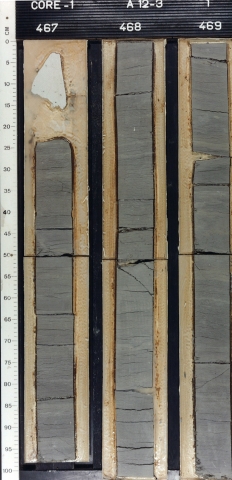Light grey to white fine to very coarse sand, fining westward, non-calcareous, slightly to moderately gravelly (quartz dominant). Locally at the top, sand layers with angular cobbles. Subordinate clay beds (abundant in the Balk member) without marine shells. Regionally, light grey very fine to fine sand at the base.
Fluvial (Eridanos, Baltic River System), shallow-marine (delta front; very fine to fine sand at base), coastal and river plain (delta top; sand with clay layers).
Commonly marked by clay layers (Balk Member). Sharp contact with glauconitic, commonly shelly, shallow-marine fine sand (Breda Formation). Gradual transition (where base is fine) into or sharp contact with finer and more calcareous shallow-marine sand (Oosterhout and Maassluis Formations). Gradual transition into non-calcareous, micaceous and brown fluvial sand and clay (Waalre Formation).
Locally marked by a unit with cobbles (Hattem Layers, cf. Zandstra 1971). Commonly, gradual transition into multi-coloured, calcareous fluvial sand and gravel (a.o. lydite and milky quartz; Appelscha, Sterksel and Urk Formations), or into fluvial sand and clay (Waalre Formation).
